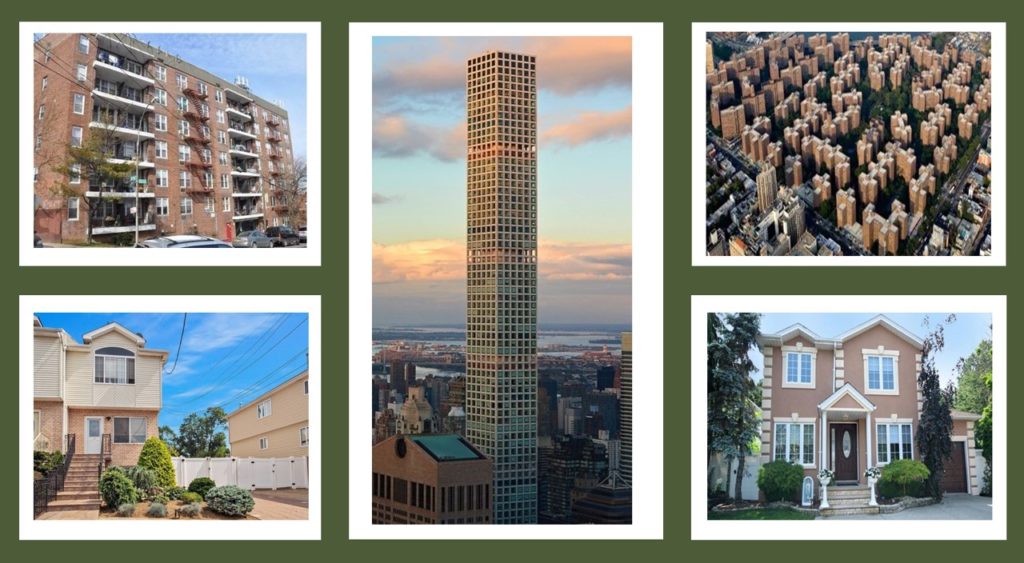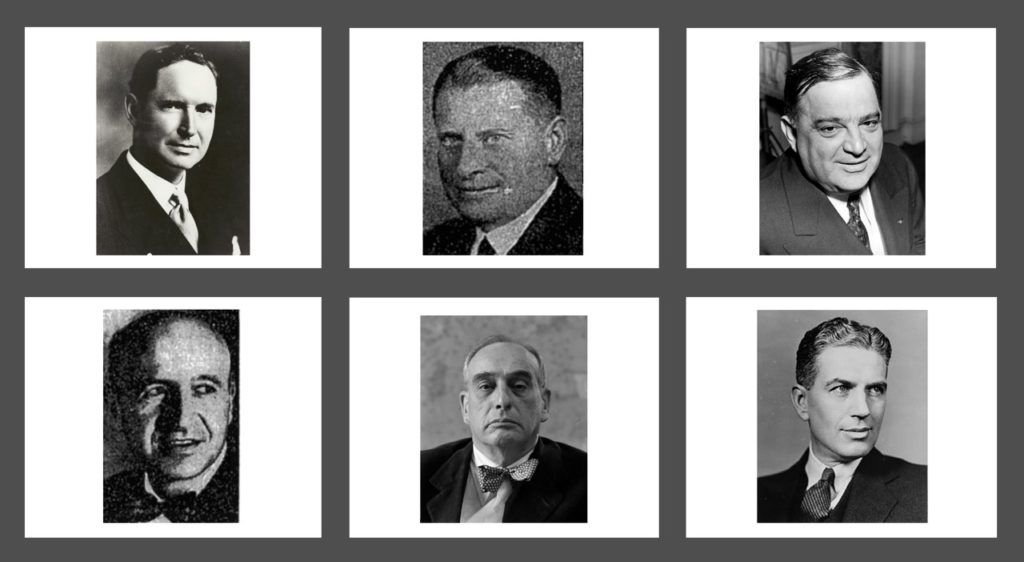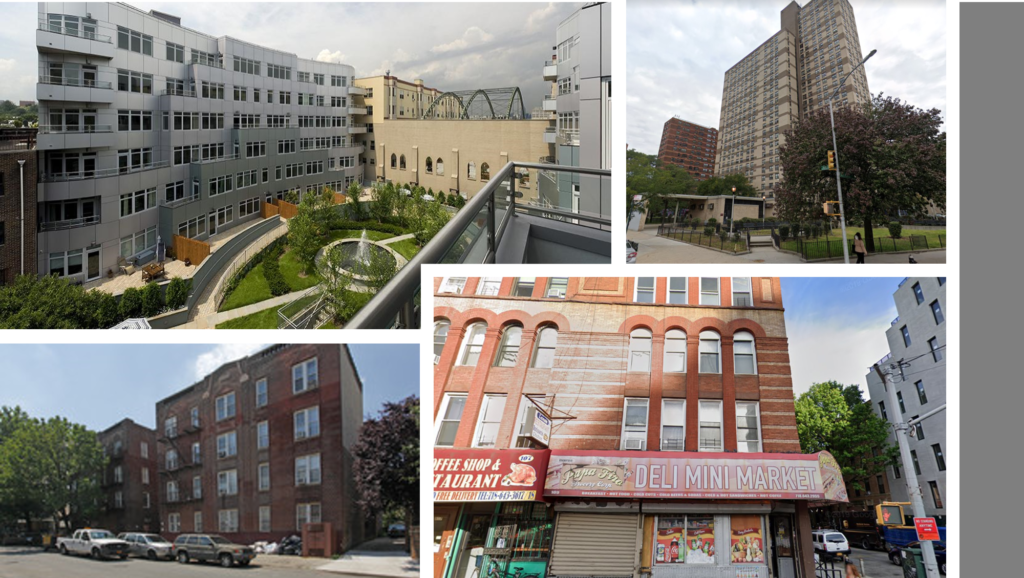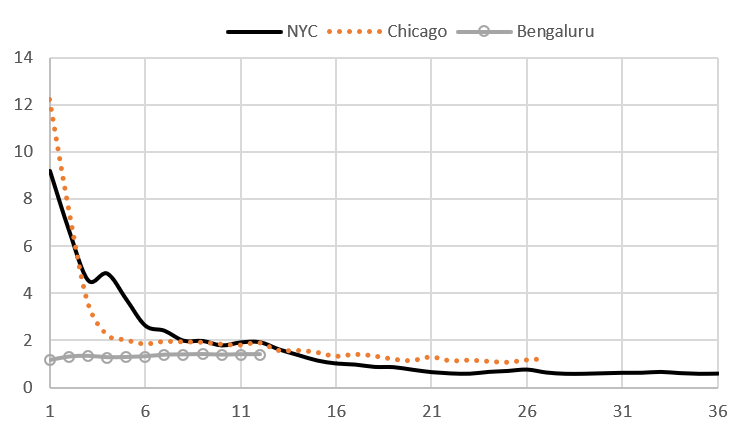Jason M. Barr July 1, 2024
Note: This blog post is based on the research discussed in my book Cities in the Sky: The Quest to Build the World’s Tallest Skyscrapers, as well as my working paper on the subject, which includes references to the original sources and archival documents.
Part I of the series can be read here.
Winning the Argument
In 1896—a decade after the completion of the Home Insurance Building (HIB)—William Le Baron Jenney and his Chicago colleagues, including the world-renowned architect and planner Daniel H. Burnham, engaged in a public relations campaign in the trade journal The Engineering Record to convince the world that, as Jenney claimed, “The skeleton construction was a radical departure from anything that heretofore appeared and was exclusively my invention.”
These words represent an attempt to rewrite history as the HIB was neither a radical departure from previous structural designs nor something that one individual, let alone Jenney, could claim sole credit for. The perfection of the tall office building was the product of decades-long trial and error. And there is virtually no metric for which Jenney’s building can be deemed the “first skyscraper.”
However, because Chicago architects and engineers were so crucial in advancing building technology and creating the Skyscraper Revolution, the public was convinced when they claimed that Jenney built the first skyscraper. The engineering argument was rather technical, while Jenney’s statement was simple and believable, despite being untrue.
But Why?
But Jenney’s dogged insistence that his building was both radical and pivotal begs the question: Why was he so eager to claim the prize? Was it pure vanity? Or were other forces at work?
The answer is that in the years between 1885 and 1896, other architects and cities were vying for the title of “first skyscraper” and the Chicago community fought to claim what they believed was rightfully theirs. As a result, they began changing the historical account and offering misleading statements about the structure of the Home Insurance Building.

The Claimants
Jenney’s language in the ER and private letters makes sense when placed in the context of what he saw and heard in the late 1880s and 1890s. By using phrases such as “radical,” “my invention,” and “first steel skeleton,” to refer to his building, Jenney was attempting to securely establish his claim by locking out the other claimants, which included three key “factions”: those from New York, Chicago, and Leroy Buffington, from Minneapolis, respectively.
Leroy Buffington
Leroy Buffington (1848-1931) was arguably the most antagonistic and problematic of the lot. In 1874, he opened a practice in Minneapolis, where he flourished. As a designer of large public buildings in the 1880s, Buffington knew the state of the art of structural methods.
He claimed that in 1882, he discovered the ideas behind the skyscraper and was determined to get his due. In 1888, he won a U.S. patent for his iron-framed skeletal building design, which, he argued, showed solid proof that he was the father of the tall building. However, no structure was ever built using his patented system.
In 1892, Buffington started suing for patent infringement. His first of several unsuccessful cases was against William H. Eustis, a real estate developer and the mayor of Minneapolis. Eustis’s answer to Buffington’s bill of complaint referenced Jenney’s 1885 article about the design of the HIB in The Sanitary Engineer as proof that the patent had been anticipated and was, therefore, void.[1]
In 1892, Buffington also wrote to Jenney (and likely many others), “I beg to direct your attention to my patent, No. 333,179, issued May 22nd, 1888 for ‘Iron Building Construction’, and to warn you and others to refrain from infringement of said patent or any of its claims.” We can imagine that Jenney received quite a shock when he opened the envelope. Jenney responded by asking for a copy of “said patent.” On May 14, 1892, Buffington honored his request.
Buffington After Boodle
In late November 1892, at least four Midwest and Western newspapers published an article with the headline, “Buffington After Boodle,” which stated that Buffington “is about to begin suit against the owners of all the sky-scraping buildings in Chicago. He claims that the structural iron work has been put in a manner conflicting with patent which he holds. He will claim damages to the extent of the 5 per cent of the cost of each building. This means that he will claim $4,500,000 from Chicago….”
Some version of this article was printed around the country during the last week of November and early December, including the in San Francisco Chronicle, the Chicago-based newspaper, The Sunday Inter Ocean, and The Chicago Tribune on December 4.
Buffington’s claims seem extreme today, but when put in the context of Jenney’s private experiences with Buffington and his retainers, such copy, if it reached Jenney—which it most likely did—would undoubtedly have contributed to his concern. Jenney’s words in the ER need to be considered in light of Buffington’s actions, and the evidence suggests that Jenney was worried.
Gates Paves the Way
Then, in 1896, when F. T. Gates inquired to The Engineering Record about who invented steel framing, Jenney saw an opportunity to get Buffington off his back. Jenney rounded up friends, colleagues, and former executives related to the Home Insurance Company to help in his quest by having them write letters supporting him.
The letter-writing campaign can be seen as an attempt for both the Chicago group—through Jenney—to claim “prior art,” which is evidence that an invention was already known. If another party can document it, it can invalidate a patent.
Jenney’s phrasing in his letter to the ER and private letters such as “radical departure,” “my claim to the invention,” and “nothing of the kind had ever been…hinted at” were efforts to demonstrate that Buffington’s patent was null and void due to Jenney’s structure, completed at least two or three years before Buffington filed (November 1887) or won (May 1888) his patent.
Thanks for the Honor
In early 1897, when Gates “formally” chose Jenney as the inventor of the skyscraper in another letter in The Engineering Record, Jenney wrote to Gates to thank him for his selection, stating, “I accept [this honor] with many thanks: it is the one official recognition, confirming my claim to the invention of the Steel Skeleton Construction, though as far as I know, no one has ever made the claim….(emphasis added). I have also to thank you for the inquiry through the Engineering Record, which brought the matter to the notice of the Architectural and Engineering profession.”
Jenney saw Gates as paving the way for him to make his claims in the public forum. However, Jenney’s statement, “no one has ever made the claim,” is false, in light of the fact that Jenney received a cease-and-desist letter from Buffington in 1892. Additionally, the newspaper article about Buffington’s lawsuits likely reached Jenney’s desk.
The Birkmire Letter
Furthermore, in an 1899 letter to the architect William H. Birkmire, Jenney confesses his awareness of Buffington’s actions when he wrote:
L. Buffington of Minneapolis, took out a patent May 22, 1888, which I have before me….Buffington formed a company with large capital, supposed to be for the purpose of prosecuting and obtaining money from all those who used the skeleton construction. Parties interviewed me whom I supposed to be Buffington’s attorneys. I showed them that if they could find anyone using that extravagant column [in the patent] they certainly could prosecute them but no architect or engineer of any scientific knowledge would be guilty. That was the last I knew of the patent. He certainly never attempted to interfere in the use of the skeleton construction which he did not patent (emphasis added).
Again, how Jenney can say to Gates that “no one has ever made the claim” is odd considering that he was interviewed by Buffington’s lawyers four years before Gates’s inquiry to the ER!
This “fight” between Buffington and others would continue for many years and was no doubt an ongoing source of concern for Jenney. In 1904, a Chicago-based attorney, James Raymond, responded to an offer from Jenney to help in Raymond’s legal work for his client, the First National Bank, which Buffington was suing for patent infringement. Raymond expresses his fear, which Jenney likely shared, when he wrote, “Undoubtedly if Buffington should win either the suit commenced here or the suit commenced in New York, claim would be made against all the skeleton buildings in the country which come within the construction which the Court might thus put upon the Buffington patent.”

The New York Faction
While Buffington may have represented Jenney’s “left flank,” several New Yorkers on “the right flank” were vying for the trophy. One respected architect, George Post, felt he deserved the credit. Post’s building, the New York Produce Exchange (1884), at the lower tip of Broadway, was arguably the first tall office building to contain at least one set of curtain walls—in this case, in the internal courtyard.
Post’s Claims
In 1894, at a panel discussion at the annual meeting of the American Institute of Architects, which included both Jenney and Daniel Burnham, Post made his claim to his esteemed colleagues when he said:
Individually I believe, although I never very carefully investigated the subject, that I was the first person to use anything approaching to the steel cage. Some fourteen years ago, I think it was, I built the tower of the Produce Exchange with a wrought iron and cast iron combined cage, filling in the panels with brickwork, but covering it on the outside with cast iron plates in the form of pilasters and string-pieces and cornices.…
Using the terminology of the day, by “cage,” Post means an iron-framed curtain wall. Again, the fact that Jenney stated in his letter to Gates that he never heard anyone make the claim about steel-framed construction is disingenuous, given that he was sitting on the panel dais when Post made it two years before the ER debate.
Then, during the letter-writing campaign in 1896, Post weighed in again when he said, “In 1881, I designed and erected the New York Produce Exchange, in which the interior courtyard wall is constructed with a cage of cast-iron columns and wrought-iron girders, which are filled with brick panels. I am inclined to think that this is the first example of cage [iron-framed] construction.”
However, Post’s claims suffered for several reasons. First, his voice in the ER was drowned out by the bevy of those writing for Jenney. And the HIB, unlike, the Produce Exchange had iron in the external street-facing walls, while the Produce Exchange did not. So, while Post’s courtyard walls represented a true evolutionary step forward in curtain-walled design, Jenney’s building seemed closer to one.
Bradford Lee Gilbert
Another claimant arrived on the scene in 1889. The architect Bradford Lee Gilbert was awarded a commission by John Noble Stearns, a silk merchant, seeking to erect an office building on an awkwardly shaped lot in Lower Manhattan. The problem was that the Broadway frontage was only 21.5 feet across, though the lot widened toward the rear. To erect a masonry-bearing structure would have meant that the thick walls would have rendered the site unprofitable.
Gilbert claimed he devised the idea of turning a railroad bridge truss on its side. However, there is some debate about whether the idea was his or that of William H. Birkmire, who worked for the Jackson Iron Works, supplying the building’s iron at the time. Gilbert framed the exterior walls with iron columns and included diagonal members for wind bracing. The framing freed up significant space on the lower floors. The Tower Building was only 11 stories.
Like many buildings of the day, it was a hybrid. The rear part had masonry walls. The iron frame in the front stopped at the sixth floor, and above that were load-bearing walls. But his building certainly made an impression. Partly for his achievement with the structure, Gilbert won a medal at the Chicago World’s Columbian Exposition in 1893 “for a new type of American architecture.” It’s telling that Jenney did not win an award for the Home Insurance Building.
Them’s Fighin’ Words
Although a few years after the letter-writing campaign, a “fight” erupted between New York and Chicago when, on August 9, 1899, the Society of Architectural Manufacturers of New York affixed a bronze plaque to the Tower Building, which stated that it was “the earliest example of the skeleton construction….” This event illustrates how, in the late 19th century, New York was aiming for the “trophy” as well. It also helps to explain Chicago’s ongoing attempt to claim Jenney invented the skyscraper.

Chicago’s Other Claimants
Finally, while less vocal than Buffington or the New York architectural community, some individuals in Chicago felt they deserved more credit than they received. Jenney, Burnham, et al. constantly interacted with community members; from time to time, they would likely talk with or hear a story about someone who felt denied their recognition.
The Chicago architect Frederick Baumann believed he, too, was entitled to some credit. In 1884, Baumann published a pamphlet outlining the principles of iron-framed construction. Though there is an intense debate about whether Baumann’s article came before or after the conception of the Home Insurance Building, Baumann was disappointed that his ideas were not recognized.
Peter Wight, a well-known architect and fire-proofing expert at the time, agreed with Baumann, to whom he wrote in 1915,
Mr. Jenney’s claim has no foundation in fact…I know more about the Home Insurance Building than any other man living or dead, but did not feel like contraverting Jenney’s claims, as Holabird and Roche never did with any earnestness. George B. Post used cast iron construction in the inner court of the Produce Exchange in that city, just as H and R had done. I am sorry you did not have an opportunity to bring your ideas into effect.
As this letter implies, there was also a movement in Chicago to anoint the Tacoma Building (1889), designed by Holabird & Roche, as the “first skyscraper” since it was the first tall office building in Chicago to have curtain walls in the street-facing façades (though the rear walls were load-bearing brick).

The Jenney Myth Must Die
The Jenney Myth arose because we like stories with clean narrative arcs. In this case, the gist of the (made-up) story goes like this: Chicago was growing by leaps and bounds after the Great Fire of 1871. The Loop, being hemmed in, desperately needed taller buildings to accommodate the demand. One man–brave and ingenious–answered the call. William Le Baron Jenney, heroically and radically, altered the course of history by designing the Home Insurance Building. After even taller builders emerged in the late 19th century, his genius proved correct and was awarded the title “Inventor of the Skyscraper.”
Jenney was an engineering genius, to be sure, but his building was none of what history has ascribed to it. It was neither a steel-framed skyscraper, a radical break with the past, nor a pivotal one. While it’s impossible to have a counterfactual history where Jenney never existed, we can say for sure that the skyscraper would have been “invented” all the same. For that matter, it seems likely that if Jenney had not been presented with such a propitious opportunity as the ER letter-writing campaign, his building would have been just a historical curiosity among architects and engineers with little notice among the public.
It’s time the Jenney Myth was laid to rest.
Part I of the series can be read here.
—
[1] We can only speculate if Jenney was aware of this. But if so, it’s possible that Eustis’s claim gave Jenney the idea of using his building to demonstrate “prior art” regarding Buffington’s patent. Perhaps when Buffington’s lawyers interviewed Jenney, they mentioned this fact to him.









